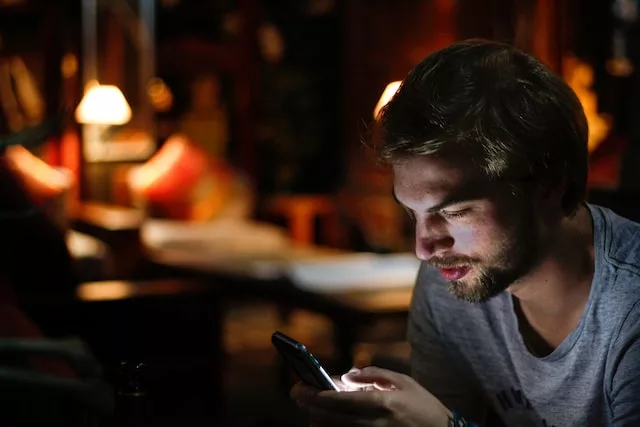Not Just a Page in a Manual
In my client, Colin, I saw myself. He was, as I had once been, fixated on his physical well-being to the point that his hypervigilant behaviors had taken over and begun to negatively impact his daily life. He had put college on hold in his senior year and moved back home. He was consistently wracked with worry about his physical health even though he had no documented health problems. In session, Colin would constantly check his body, running his fingers along his neck to investigate for lumps or placing his hand across his chest to ensure that his heart wasn’t palpitating. He would often express the feeling that he was doomed to become horribly, catastrophically ill. He lived in constant discomfort and suffered persistent feelings of worry. I had been there myself.
Like what you are reading? For more stimulating stories, thought-provoking articles and new video announcements, sign up for our monthly newsletter.
By the age of 30, I had visited numerous emergency rooms complaining of vague discomforts: heart palpitations, lightheadedness, shortness of breath, headaches, bladder pain. I’d be discharged each time with a clean bill of health, but I wouldn’t quite believe it. Often, I’d seek further care, visit other doctors and specialists, and ruminate and fixate on an impending health disaster that was surely just around the corner. I just couldn’t seem to accept that I was healthy; it was too risky. If I let my guard down, then the worst would happen.
It took a while, but I recovered. Therapy helped. So did a low dose of Prozac. I still got anxious about my health, but not to the extent that I constantly sought out care and lost myself in anxious rumination. But what about Colin? What would help him? When I began to think about what had helped me, I was surprised at how simple it sounded. I had found a therapist who didn’t make me feel crazy, irrational, or neurotic. He listened to me and never judged, even when I rattled off vague physical symptoms and the anxious conclusions I would draw from them, even when I told him I had scheduled yet another doctor’s appointment. He stayed with me.
But with Colin, I blundered. I told myself just listening wouldn’t pass muster, wouldn’t be intervention enough. So, I went clinical instead of human. I forgot what had helped me. I thought it would be helpful to show Colin the DSM criteria for Illness Anxiety Disorder. My thought was that he would read it and realize that he was being anxious and irrational in his worry and fixation about his physical health. I probably don’t need to tell you that this approach backfired. Though he never said it outright, Colin, I have no doubt, felt pathologized, invalidated, and judged. Therapy didn’t seem to be progressing, and Colin’s anxiety wasn’t getting any better. If I was truly going to help him, I had to pivot, and fast.
Moving to Where There is No Sky
At that time in my career, I was reading a lot of classic psychology texts and one that consistently resonated with me was Man’s Search for Himself, by Rollo May. In this book, May describes a young girl coming home from school after there had been a drill for students to hide from a nuclear attack. Once home, the young girl asks her mother, “can’t we move somewhere where there is no sky?” Eureeka. Colin and I both, while in an anxious state, desired to be somewhere where nothing bad could happen. If there was no sky, there could be no bomb. If there is no stone left unturned, there can be no surprises. So, if we check enough, if we fixate and protect enough, nothing bad can happen.
Call it “hypervigilance” or “neurosis” or “hypochondria” — whatever unhelpful psychological designation you wish to give it — it comes down to one thing: an anxiety-based behavioral response. When I would visit ER after ER, I was seeking a safe place where nothing threatening could happen. When Colin checked and rechecked his body for changes and symptoms, he was seeking a stasis where nothing bad could happen. When he returned home despite excelling as a college student, he was seeking a safe, nonthreatening space.
The little girl in Rollo May’s book is, to a greater or lesser degree, and in one form or another, all of us. When we are threatened, we seek safety. This response is human, though primitive; it is not, however, neurotic or maladaptive or irrational. Once I realized that Colin and I were no different than May’s young girl, my clinical mind softened, therapy began to expand, and change started to occur.
Putting the Manual in the Drawer
I put my DSM in the drawer and began to talk to Colin about anxiety as a general concept. I reached for any metaphor I could find: “anxiety is like a smoke detector that goes off at the slightest wisp of smoke;” “anxiety is like a home alarm system that gets tripped when a strong gust of wind blows.” I wanted Colin to understand anxiety at its core. The therapist I mentioned earlier had done the same for me; I recall him explaining the “mammalian brain” and the concepts of “fight, flight, and freeze.” The more he educated me on what anxiety is and why it happens, the more in control I began to feel. Gradually, I became an expert on my own unique presentation of anxiety. And from there, I began to learn how to manage it.
I wanted Colin to experience this sense of knowledge and power in the face of his debilitating worry. If he could understand anxiety, he might feel less threatened by it. But beyond education, this required normalization. If Colin viewed himself as part of esoteric group of neurotics, he would assuredly continue to feel isolated with his fear. If, on the contrary, he felt a sense of commonality, he might be more willing to step out of his rigid fixation. So, we talked about physical health and how scary it is. We talked about it as you and a friend might talk about the weather or the football game. I left diagnostic language and pathology out of it and just talked with him about something we all have in common.
Then Colin said, “now that I think about it, this all started after the thing at the airport.” A few months before, at an airport, while preparing to fly home from college for a break, Colin had become dizzy. He didn’t quite faint, but he thought he might. His brain went into overdrive, telling him he was having a heart attack or a seizure or something catastrophic. Though he flew home, he shared that it was after this incident that his health-related anxiety had really begun to escalate. Anxiety had caused him to put his life on hold. He was looking to move somewhere with no sky. Colin’s newfound understanding of anxiety had allowed him to draw an important connection that he felt safe enough to share and that, ultimately, would help him begin letting go of his catastrophic worry. It wasn’t clinical language that allowed for this; nor was it diagnostic criteria — it was talking, sitting together, creating safe space.
Now we really had something to build on: there had been a stimulus, then a belief, then a behavioral response. Incredible things happen when we just listen, and Colin’s disclosure provided an opportunity. So, we kept talking. We talked about how things happen that scare us, how we have a cognitive response to these things then a behavioral response. I was careful never to call into question or to judge his response, but rather to help him understand the chain. It was making sense. I can’t say exactly that there was a breakthrough (this is, often, a myth of psychotherapy, as true breakthroughs are almost never moments of dramatic and triumphant epiphany), but it wasn’t long after that Colin started to come to therapy less often, began to report feeling less anxious, and began planning his return to college.
More Than an F-Code
Nobody ever asked me for Colin’s diagnosis. He never asked me either and I owe him a great debt of gratitude for staying with me despite my wrongheaded decision to show him the DSM criteria. He gave me a chance to change course, for which I am eternally grateful. Colin was my on-the-job training in humanistic psychotherapy. Sure, I’ve read Irvin Yalom and Carl Rogers, but nothing can supplant real-life practice. Colin was pivotal in my recognition of the importance of humanizing rather than pathologizing. In retrospect, he was more important than any course I’ve taken, book I’ve read, or theory I’ve learned. He didn’t feel safe in his body but, over time, he felt safe in therapy, and that allowed his sense of safety to expand outward and to begin combatting his sense of worry. I realize now that my own therapy had afforded me the same opportunity. Once I felt accepted and safe, I was free to begin questioning my anxious thoughts and conclusions.
So, sure — on paper or to insurance companies, Colin might be the posterchild for Illness Anxiety Disorder (F45.21), but in a human sense, he is much more than an F-code. Because of a frightening stimulus, his unique form of anxiety attached itself to his physical health. Anxiety attaches itself to something for everyone — what it suctions itself to merely depends on our unique experiences. So, what does this make Colin, really? Is he neurotic or a hypochondriac? Or, simply, did he, like any human, become frightened by something frightening and want to protect against it? In protecting against the threat, he utilized specific behaviors in order to remain safe. These behaviors, no doubt, worked for a while, then they didn’t. I had done the same. You have done the same. If we humanize the experience, we allow for coping and healing. If we pathologize it, we impede coping and healing.
When we descend from our clinical and diagnostic “high horse,” we truly become Rogerian and “meet our clients where they are.” When I was seeking emergency care for a perceived illness, I was not an exotic specimen to be viewed through a clinical microscope. I already felt different and alien; the last thing I needed was confirmation of that belief. I needed to be understood, accepted, and humanized, not studied as though I was a fascinating case in the annals of abnormal psychology. Colin and I have this in common: when we felt we were being viewed through a clinical lens, we personalized our diagnosis and become resigned to it as an immutable fact. When we felt accepted and seen through a human lens, we became able to view our anxiety as a cloud in the sky rather than as the sky itself.
Questions for Thought and Discussion
What are your personal and clinical impressions about the author’s client, Colin?
Have you encountered clients with health anxiety in your own practice?
How does your own treatment approach with these clients differ from the author’s?
What might you have done differently with Colin?








